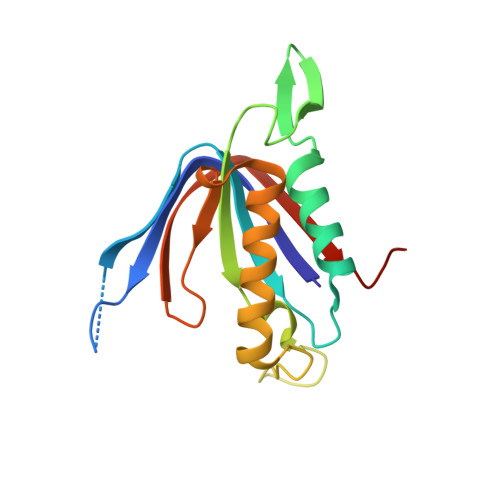Mechanism of chiral proofreading during translation of the genetic code.
Ahmad, S., Routh, S.B., Kamarthapu, V., Chalissery, J., Muthukumar, S., Hussain, T., Kruparani, S.P., Deshmukh, M.V., Sankaranarayanan, R.(2013) Elife 2: e01519-e01519
- PubMed: 24302572
- DOI: https://doi.org/10.7554/eLife.01519
- Primary Citation of Related Structures:
4NBI, 4NBJ - PubMed Abstract:
The biological macromolecular world is homochiral and effective enforcement and perpetuation of this homochirality is essential for cell survival. In this study, we present the mechanistic basis of a configuration-specific enzyme that selectively removes D-amino acids erroneously coupled to tRNAs. The crystal structure of dimeric D-aminoacyl-tRNA deacylase (DTD) from Plasmodium falciparum in complex with a substrate-mimicking analog shows how it uses an invariant 'cross-subunit' Gly-cisPro dipeptide to capture the chiral centre of incoming D-aminoacyl-tRNA. While no protein residues are directly involved in catalysis, the unique side chain-independent mode of substrate recognition provides a clear explanation for DTD's ability to act on multiple D-amino acids. The strict chiral specificity elegantly explains how the enriched cellular pool of L-aminoacyl-tRNAs escapes this proofreading step. The study thus provides insights into a fundamental enantioselection process and elucidates a chiral enforcement mechanism with a crucial role in preventing D-amino acid infiltration during the evolution of translational apparatus. DOI: http://dx.doi.org/10.7554/eLife.01519.001.
- Structural Biology Laboratory, Centre for Cellular and Molecular Biology, Council for Scientific and Industrial Research, Hyderabad, India.
Organizational Affiliation:

















